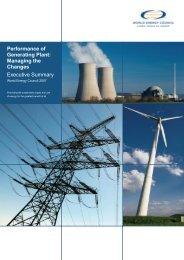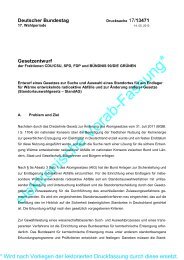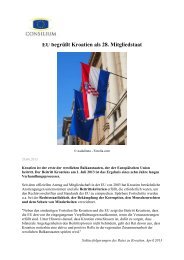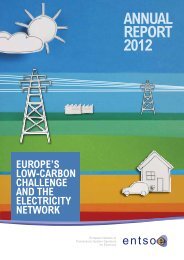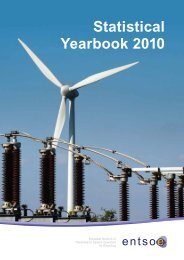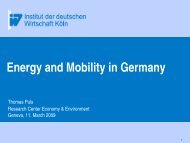ENTSO-E Overview of transmission tariffs in Europe: Synthesis 2010
ENTSO-E Overview of transmission tariffs in Europe: Synthesis 2010
ENTSO-E Overview of transmission tariffs in Europe: Synthesis 2010
Create successful ePaper yourself
Turn your PDF publications into a flip-book with our unique Google optimized e-Paper software.
Methods and hypotheses chosen for <strong>ENTSO</strong>-E overview<br />
The ma<strong>in</strong> goal <strong>of</strong> this <strong>ENTSO</strong>-E overview is to present a comparison <strong>of</strong> the calculated<br />
unit <strong>transmission</strong> <strong>tariffs</strong> expressed <strong>in</strong> €/MWh for the so called “base case” (pre-def<strong>in</strong>ed<br />
voltage level which load and generation are connected to, power demand and utilization<br />
time).<br />
The unit <strong>transmission</strong> tariff is calculated tak<strong>in</strong>g <strong>in</strong>to account the «whole» <strong>of</strong> the tariff:<br />
add<strong>in</strong>g the <strong>in</strong>voices applied to the load (L) and to the generation (G) (<strong>in</strong> case (G) is<br />
charged), and assum<strong>in</strong>g they produce and consume the energy they had <strong>in</strong> their<br />
programs (without <strong>in</strong>dividual deviations). Split <strong>of</strong> the unit <strong>transmission</strong> tariff i.e. range <strong>of</strong><br />
G and L components paid <strong>in</strong> 2013 by producers and consumers across <strong>Europe</strong>,<br />
calculated for the “base case” are shown respectively <strong>in</strong> Chart 4 and Chart 5.<br />
Voltage levels:<br />
<br />
• Voltage levels <strong>of</strong> the <strong>transmission</strong> networks vary across <strong>Europe</strong>. In particular<br />
the lowest voltage level which is classified as a <strong>transmission</strong> network varies<br />
to a great extent (see Appendix 1: Voltage levels operated by TSO)<br />
• In order to make a comparison, two ma<strong>in</strong> presumptions lay at the core <strong>of</strong> this<br />
overview:<br />
- The producer and consumer are both connected to the EHV (Extra<br />
High Voltage) network (400 kV- 220 kV);<br />
- S<strong>in</strong>ce <strong>in</strong> some countries <strong>transmission</strong> <strong>tariffs</strong> are applied to the HV<br />
(High Voltage) voltage range 150-50 kV or because no load is<br />
connected to EHV network, <strong>tariffs</strong> for these voltages have been<br />
compared for these countries too.<br />
For the comparison <strong>of</strong> unit <strong>transmission</strong> tariff, the follow<strong>in</strong>g base case is taken <strong>in</strong>to<br />
account:<br />
• 5000 h utilization time that <strong>in</strong>cludes day hours <strong>of</strong> work<strong>in</strong>g days;<br />
• The typical load considered is eligible and has a maximum power demand <strong>of</strong><br />
40 MW when it is connected at EHV and a maximum power demand <strong>of</strong><br />
10 MW when it is connected at HV;<br />
• For countries with tariff rates that are differentiated by location (locational<br />
signals) an average value has been taken.<br />
In addition to the base case, some examples are calculated <strong>in</strong> order to take <strong>in</strong>to account<br />
the variation <strong>of</strong> <strong>tariffs</strong> accord<strong>in</strong>g to:<br />
• The location <strong>of</strong> the generation and load (south or north <strong>of</strong> the country, same<br />
area / differentiated area);<br />
• The load’s utilization time (the load is considered to first consume dur<strong>in</strong>g day<br />
hours).<br />
There are some countries <strong>in</strong> which certa<strong>in</strong> elements <strong>of</strong> the <strong>transmission</strong> <strong>tariffs</strong> are set<br />
and settled on an ex-post basis. In these cases it is not possible to provide exact ex ante<br />
figures for the calculation <strong>of</strong> the 2013 unit <strong>transmission</strong> tariff. Henceforth, either 2012<br />
figures or best estimates for 2013 are provided for some or whole <strong>of</strong> the calculation. The<br />
detailed notes <strong>in</strong> the text provide further explanations <strong>of</strong> the subject.<br />
For countries for which the applicable currency is not €, the exchange rate dated 31<br />
December 2012 was used to calculate the unit <strong>transmission</strong> <strong>tariffs</strong> expressed <strong>in</strong> € (see<br />
Appendix 10: Exchange rates).<br />
5/49



